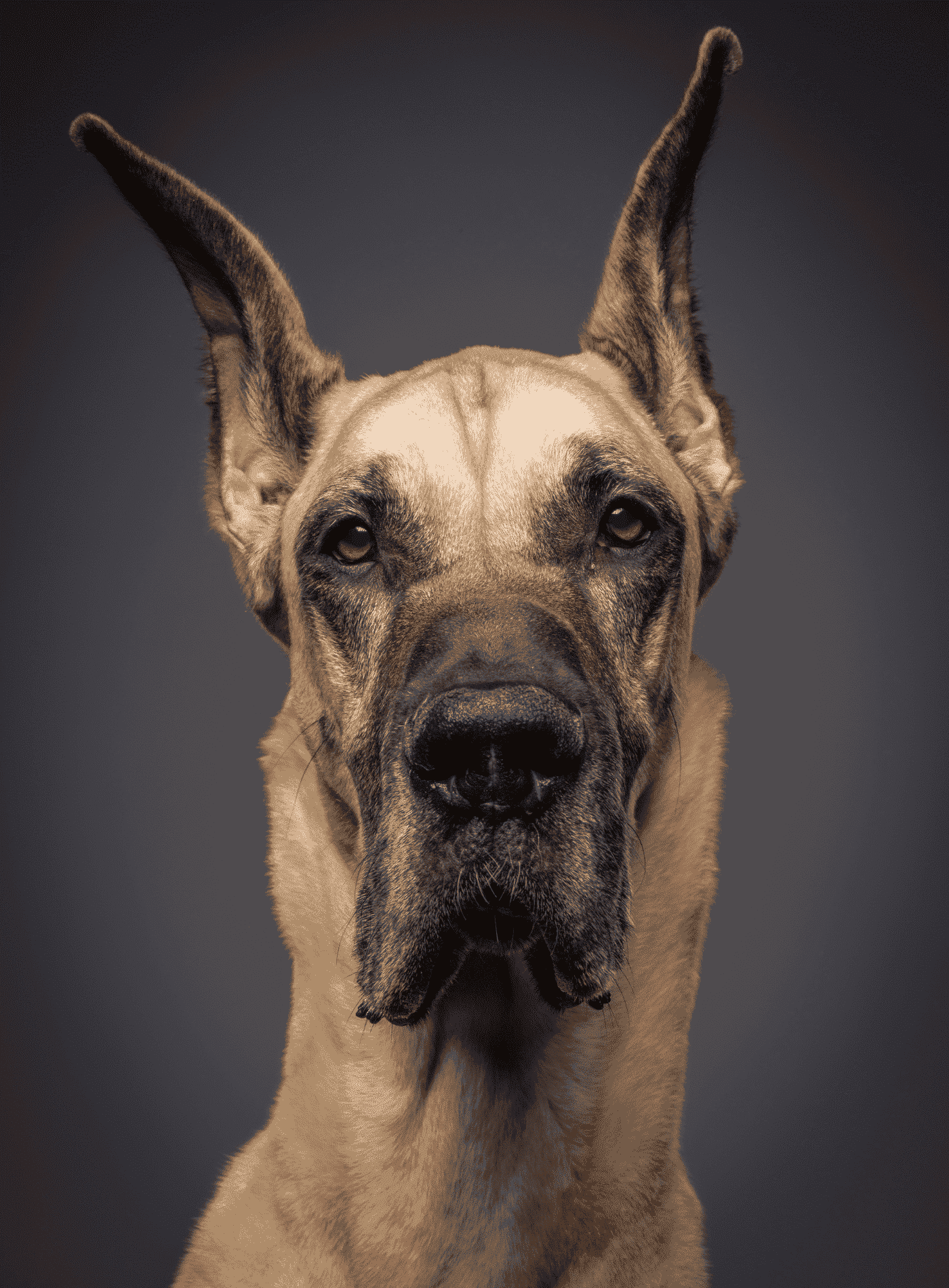Are you thinking about breeding a Great Dane or purchasing a puppy? We’ve put together a fantastic post today with a ton of information about what to look for in a breeder, and what testing should be done.
There are four tests recommended by the Great Dane Club of America. These tests should be completed on both the dam and the sire prior to breeding, and the dog being tested should pass all of these with good or excellent results.
The four tests are heart, hips, eyes, and thyroid. It is unethical to skip any one of these tests for any reason.
I’m going to cover the Great Dane Club of America recommendations in more detail below!
What Health Tests do Great Danes Need For Breeding?
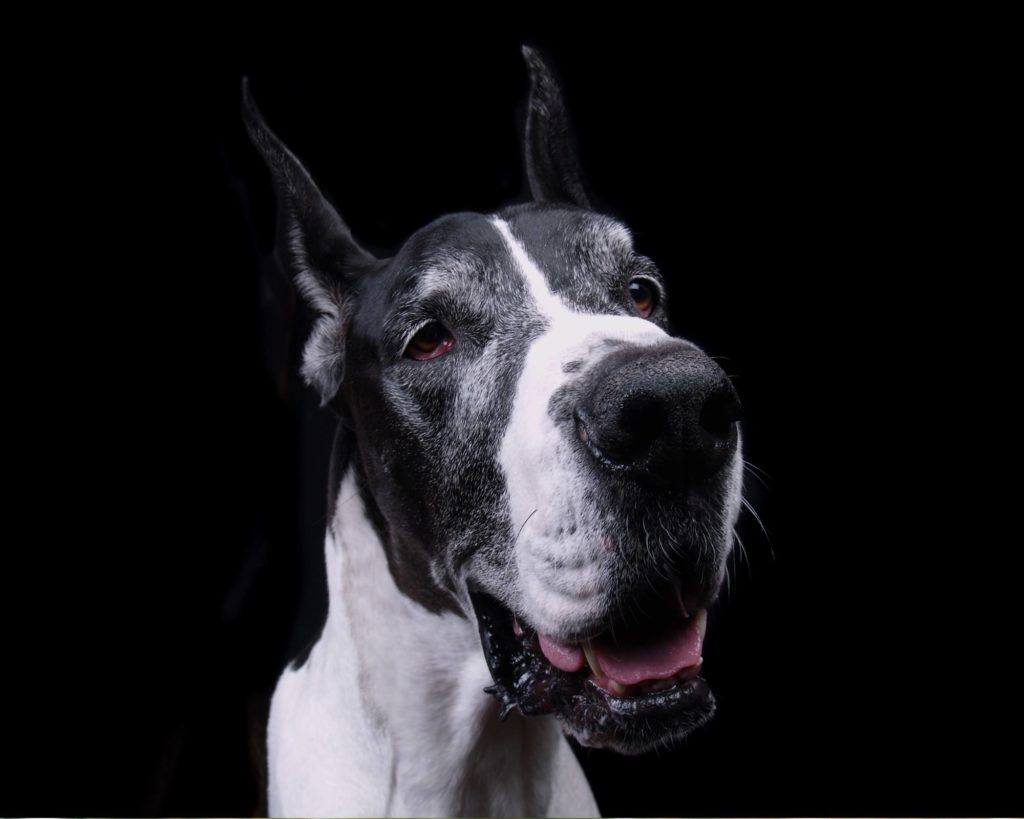
Heart Echocardiogram
The heart should be evaluated with an echocardiogram prior to breeding to rule out heart disease and congenital heart defects.
This is a non-invasive test that will give the veterinarian and a board-certified veterinary cardiologist a good idea of the size and function of the heart.
Cardiac screening is one of the most important tests a breeder can do for the health of the puppies and the dogs being bred. A healthy heart is absolutely necessary for a Dam experiencing pregnancy and whelping, and for the stud, too!
(Read here why grain-free and boutique dog foods may be bad for your dog’s heart!)
Not only is this helpful for the health of the dogs being bred, but the test results can help rule out DCM (Dilated Cardiomyopathy), heart murmurs, and other genetic or environmental heart problems seen in Great Danes.
Heart disease is a top killer of Great Danes.
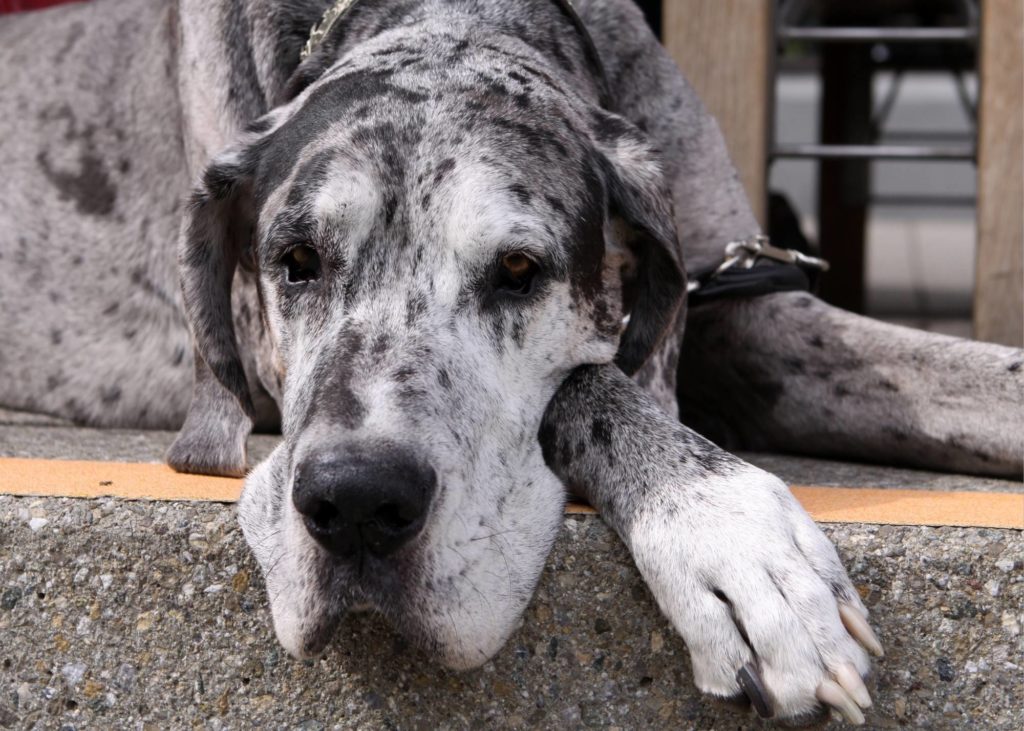
Hips X-Ray
There are two acceptable forms of hip testing, which can help rule out hip dysplasia. PennHip (which is more comprehensive) and OFA Hips.
Both of these tests are done by x-raying the dog’s hips and then submitting the x-rays to a board-certified veterinary radiologist for interpretation. Anesthesia may be required.
The radiologists will examine the images of dogs’ hips and rate them fair, good, excellent, or normal.
The results of these tests will be given as a “hip score.”
OFA Hip tests should not be completed in Great Danes prior to age 2. Some breeders choose PennHIP testing, as it will provide preliminary results (prior to age 2) that can be helpful in determining the course of a breeding program.
Great Danes should NEVER be bred prior to age 2, and the final hip results that count towards a CHIC # (see below) cannot be completed until after age 2.
Hip dysplasia is a painful condition that has many environmental factors, but can also be genetic.
Dogs with a genetic link to hip dysplasia are more likely to suffer from environmental factors (such as poor nutrition) that affect the hips and elbows.
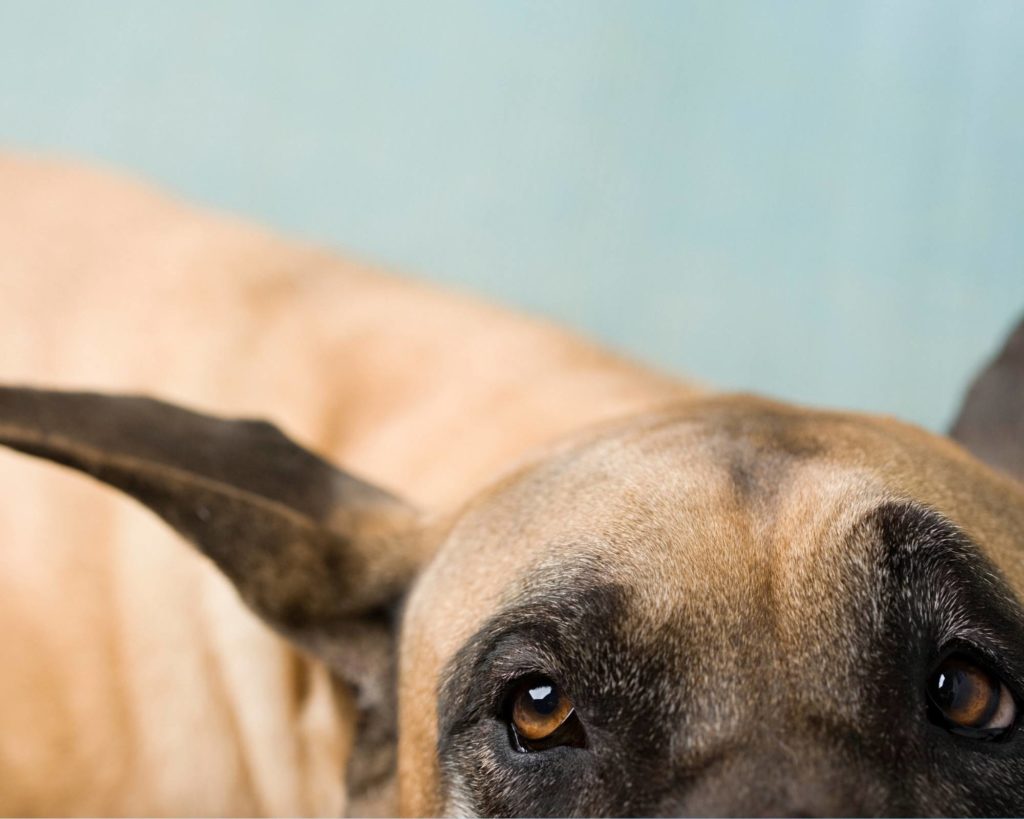
Eyes Examination
An eye exam should be performed by a board-certified veterinary ophthalmologist prior to breeding.
This is a non-invasive test that will evaluate the health of the eyes and rule out any genetic eye problems.
A quick look of the eyes by a veterinarian is not a proper OFA Eye Certification. The dog must be seen by the ophthalmologist and undergo a series of tests.
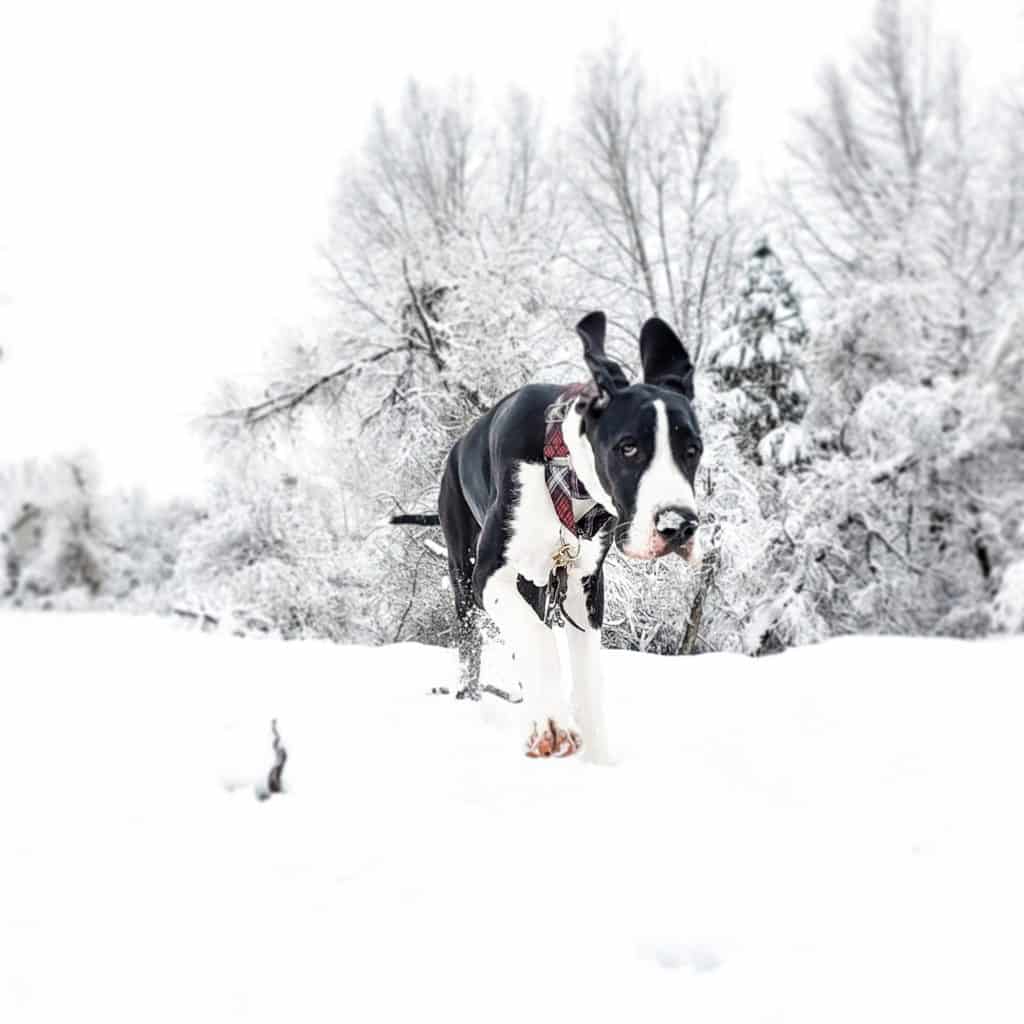
Thyroid Testing
The thyroid should be evaluated with a blood test prior to breeding. This is a simple blood test that will assess the function of the thyroid gland and check the levels of thyroid hormone in the blood.
Thyroid disease is relatively common in Great Danes and can cause a variety of health problems. It can also be genetic and should not be passed on to puppies.
Thyroid testing is a simple, inexpensive health test that can go a long way toward reducing the genetic incidence of the disease.

Genetic Screening for Great Danes
In addition to basic OFA health testing mentioned above, diligent breeders should also be focused on the pedigree and eliminating common genetic disorders such as DCM, cancer, entropion, aggression, bloat, wobblers, blood clotting disorders, and degenerative disease.
If a dog is bred without the breeder being aware of the genes carrying certain diseases into the offspring, there is a much higher chance that the puppies will be affected.
There are genetic tests available to rule many common disorders out, however, a deep dive into the health and genetics of the pedigree in a breeding program can be insightful as well!
We’ve included information about common genetic screening tests for Great Danes HERE.
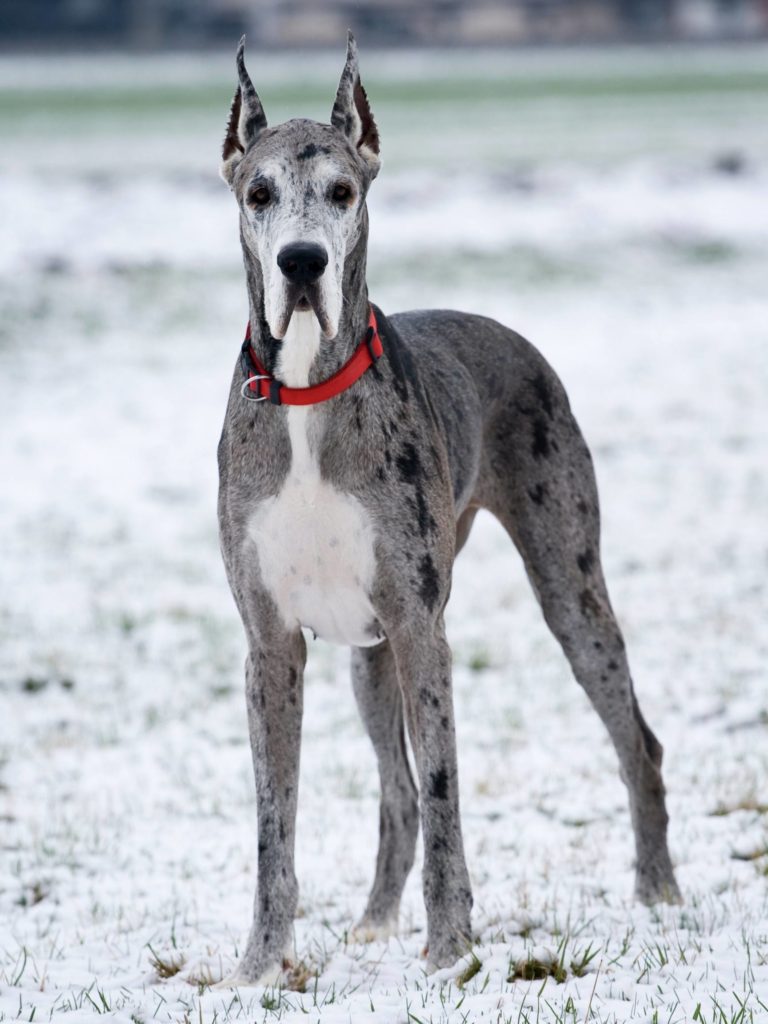
Color Testing
Color testing in Great Danes gives breeders a better picture of what coat colors may be possible with certain pairings.
This may important information for breeders who want to stick with the 7 accepted breed colors (Mantle, Merle, Black, Blue, Brindle, Fawn, Harlequin), or even for those who want to venture outside of it (a practice that we take a discouraging but somewhat neutral stance on).
Color testing is especially important for breeders who want to avoid the accidental creation of double-merle Great Dane puppies.
Double Merle Great Danes are often born deaf, blind, or both. They are also at a higher risk for other health issues. Color testing can eliminate the chance of this happening.
Read HERE to learn more about white double-merle Great Dane Puppies.
IMGD
IMGD is a progressive disorder that causes muscle atrophy and weakness.
A genetic test available through UC Davis can help rule it out.
https://vgl.ucdavis.edu/test/imgd

PRA-prcd
PRA-prcd is a progressive eye disease that leads to blindness. A genetic test is available through UC Davis.
https://vgl.ucdavis.edu/test/pra-prcd
Bloat
Bloat, AKA “GDV” is primarily a genetic disorder. It is also deadly.
VetGen offers a screening option that looks for markers that have been associated with a high-risk factor of bloat / GDV in dogs.
Dogs with a history of bloat in the immediate pedigree, or who are generally anxious and timid, should never be bred.
https://www.vetgen.com/canine-gdv.html
Pedigree Research
Of course, there are many other diseases and conditions that can be passed onto puppies. For this reason, good old-fashioned pedigree research is key.
This is a time-consuming but important task for any breeder. Reducing the chance of health conditions can ensure that the dogs produced are able to live a long and healthy life.
Knowing the health history not only of the parents but of the grandparents, great-grandparents, and even further back can offer a pretty good idea of what health concerns may be lurking!
Some common congenital problems that may be seen in a study of the pedigree include Von Willebrand’s Disease, wobblers, Addison’s disease, and dilated cardiomyopathy among others.
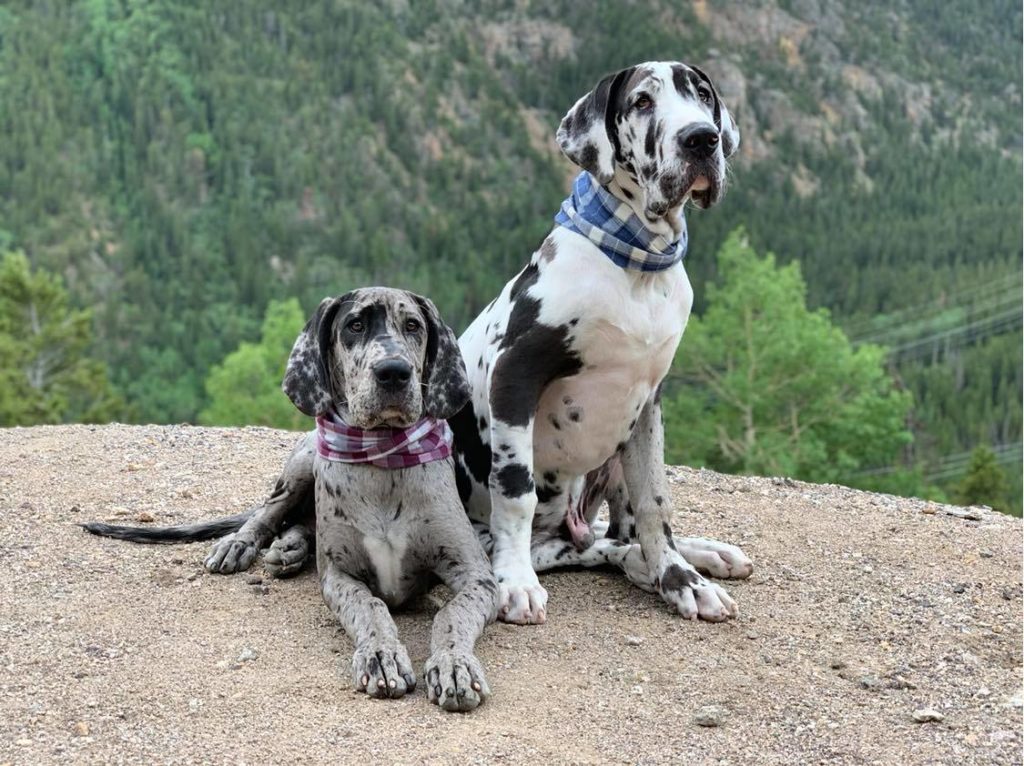
What is OFA?
OFA stands for the Orthopedic Foundation for Animals.
It is a non-profit organization that was founded in 1966 with the goal of reducing crippling hip dysplasia in dogs. Since that time, it has grown to include health testing recommendations for other genetic disorders, too.
You can see the Great Dane health testing recommendations HERE.
The OFA offers health screening and certification services for a variety of conditions in many different breeds of dogs, in addition to a public database for breeders to share the results.
When responsible breeders complete the recommended health tests, they can log the results into the searchable OFA database for others to find.
A proper OFA exam is not the same as a “vet check!”
OFA health tests have specific practices and additional paperwork outlined for each. A veterinarian will be able to direct you towards booking the correct appointments.
Some veterinarians will offer OFA Clinics at AKC Dog Shows to make it easier for breeders to book and complete appointments.
Click here to see an example of a Great Dane from Grateful Danes that was properly health tested and CHIC certified, and registered with the OFA.

What is a CHIC Number?
A CHIC number is awarded to dogs that have OFA certification for all of the recommended or required health tests.
Some health tests (such as cardiac screening) may need to be repeated yearly or prior to breeding, depending on how much time has passed and how dedicated the breeder is.
It’s important to note that a CHIC number can still be awarded, even if the dog did not pass the health screenings.
Make sure to look at the results of the registered health tests before deciding on the breeder you want to work with.
The CHIC number aims to ensure that at minimum, breeders are obtaining full health testing for their dogs.
A CHIC # paired with outstanding test results is a badge of honor.
We recommend supporting ethical breeders who are wanting to eliminate health issues in the pedigree through diligent health testing and by obtaining CHIC #’s for their dogs.
https://ofa.org/chic-programs/

Why is Health Testing Important?
It’s easy for breeders to make health claims about their puppies based on anecdotal evidence, but having actual test results speak volumes.
Fully health-tested dogs are much less likely to pass painful or deadly disorders and conditions onto puppies.
Because Great Danes are a giant breed dog, health testing is even more important!
The lifespan of a Great Dane is reduced by genetic disorders.
Good breeders are working to turn those statistics around.
Health Test Excuses
Some breeders will make excuses for why their dogs are missing health tests.
For example, they may say that hip, heart, or eye testing is unreliable and puppies may get the disease even if the parents were fully tested, so it’s pointless.
Or they will tell you that their dogs have a long health history with no problems and don’t need more tests.
Worst of all, they will tell you that they don’t have access to proper testing because OFA veterinary clinics are too far of a drive.
If we dig deeper into that statement, what we are hearing is that the breeder may not have quick access to quality veterinary care for the dogs being bred in the first place. That’s unfair and potentially deadly to the Dam and the puppies.
Many show breeders will travel several states over to prove their dogs in a show ring. A 2-4 hour drive to find an OFA veterinarian should not be a barrier for anybody who wants to ethically breed dogs.
In our honest opinion, there is no legitimate excuse. Exceptional breeders who care about the breed will fully OFA test their breeding stock prior to breeding. It’s that simple.

Backyard Breeding
Many backyard breeders are friendly and have beautiful websites and cute puppies. However, don’t be fooled!
If a breeder claims to have health certifications and ‘genetic screening’ results but doesn’t have any specific test names or numbers to match up with those claims, they are likely not being truthful.
Remember, a veterinary check or EMBARK study is NOT health testing!
In order to verify the validity of a breeder’s health claims, you should always look up their dog’s test results on the OFA website.
The breeder’s kennel name, the dog’s registered name, or their registration number should be all that is needed.
If they are missing tests (heart, hips, eyes, thyroid), have poor or fair test results, or aren’t registered at all, RUN! This is not a breeder you should support.

How Much Does it Cost to Health Test a Dog For Breeding?
The cost of health testing a Great Dane for breeding purposes can range from $500-$2500, depending on the number and types of tests being done, in addition to the local cost of living.
Some tests (such as cardiac screening or thyroid) need to be repeated every 1-3 years.
Great Dane puppies from healthy, properly tested breeding stock are more likely to live long and robust lives. Those puppies will continue to pass on their good genetics, too!
Good breeders are worth every penny that they charge, as they are dedicating a lot of time, effort, and money to their breeding program.
Hold your Great Dane breeder to a higher standard! Look for breeders that participate in the Orthopedic Foundation for Animals CHIC program, whose Danes are family members first, and who will support you and your healthy puppy for life.
